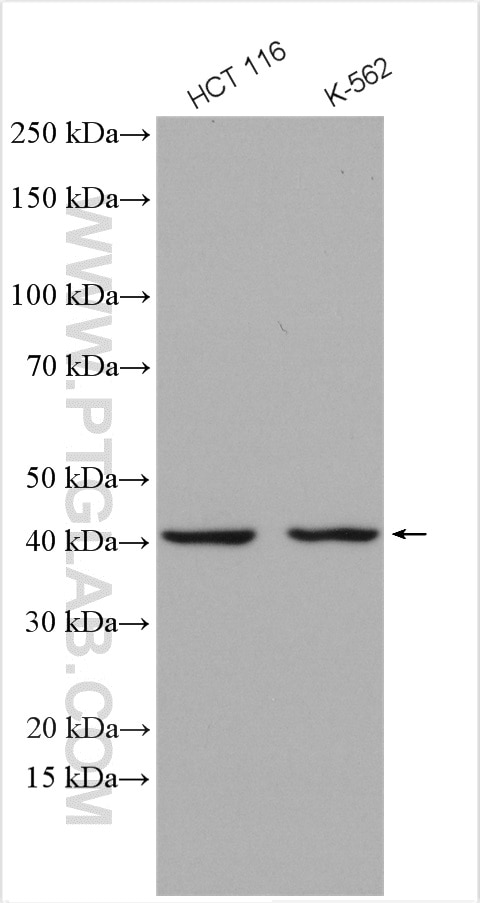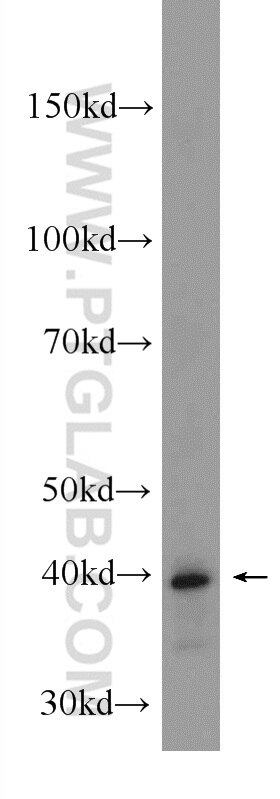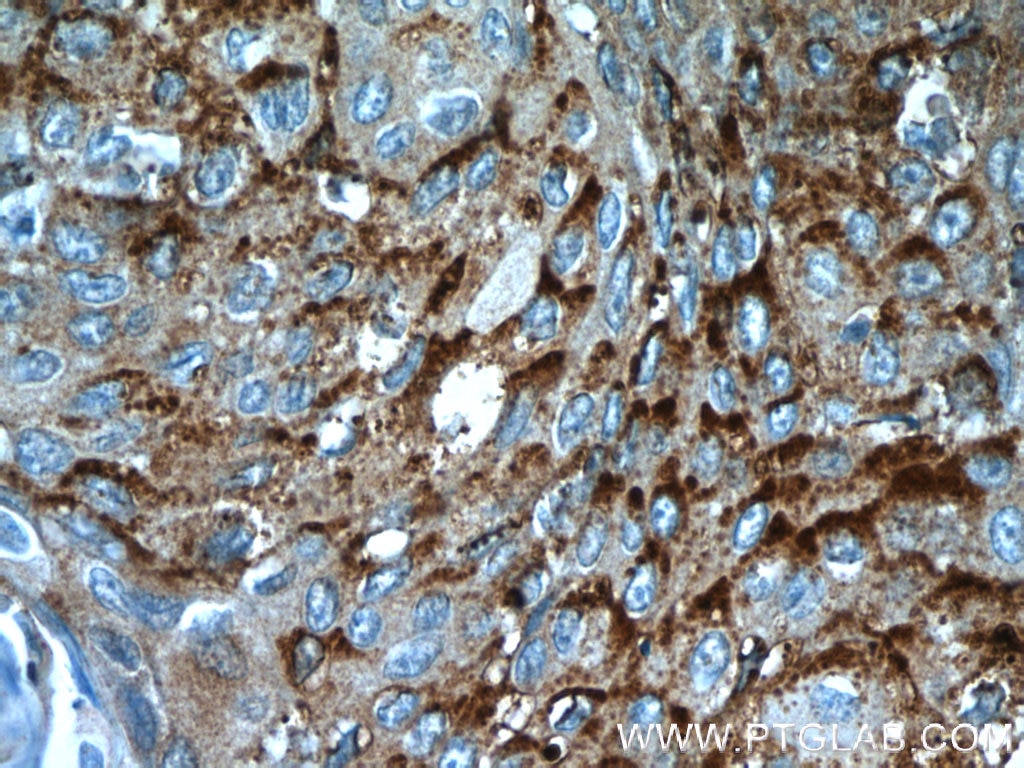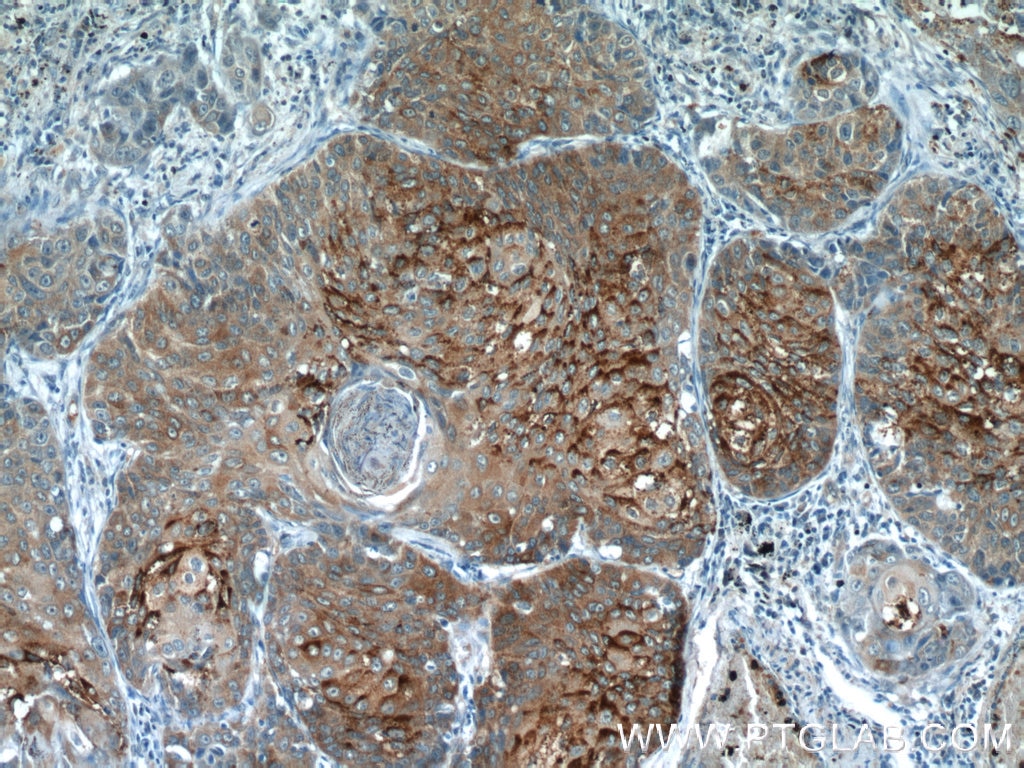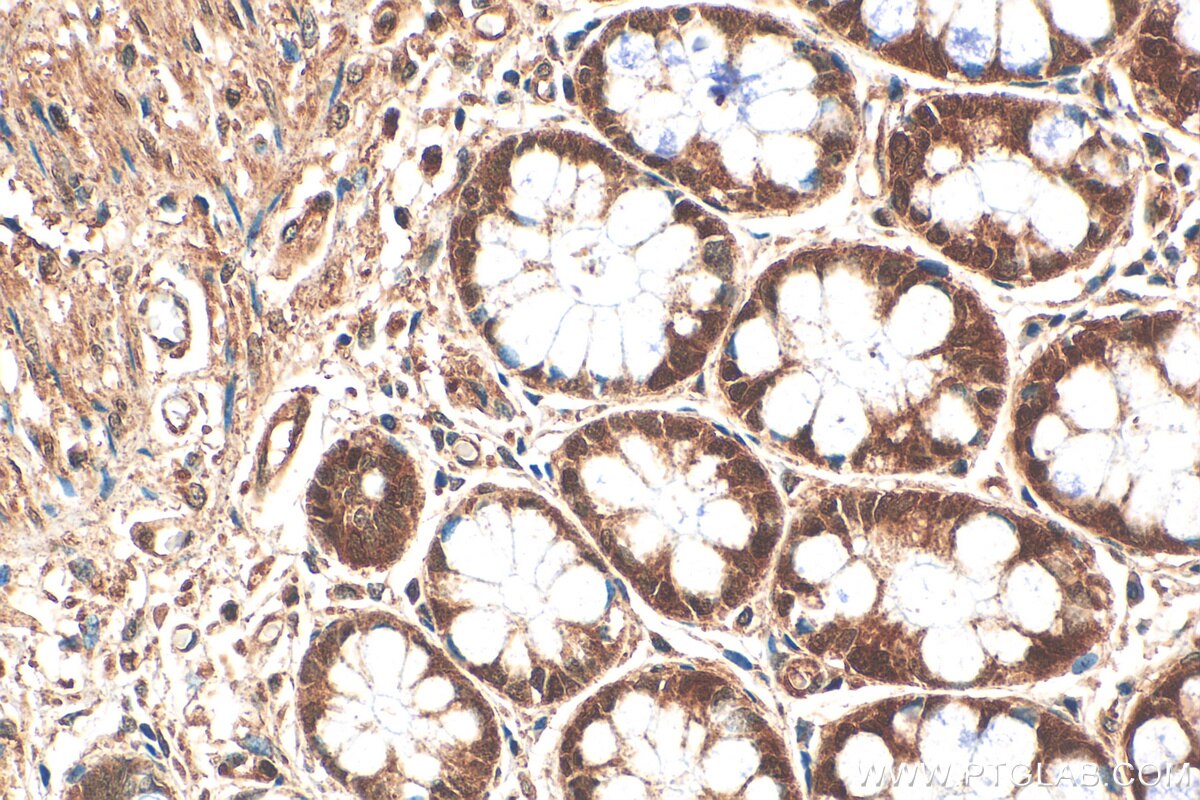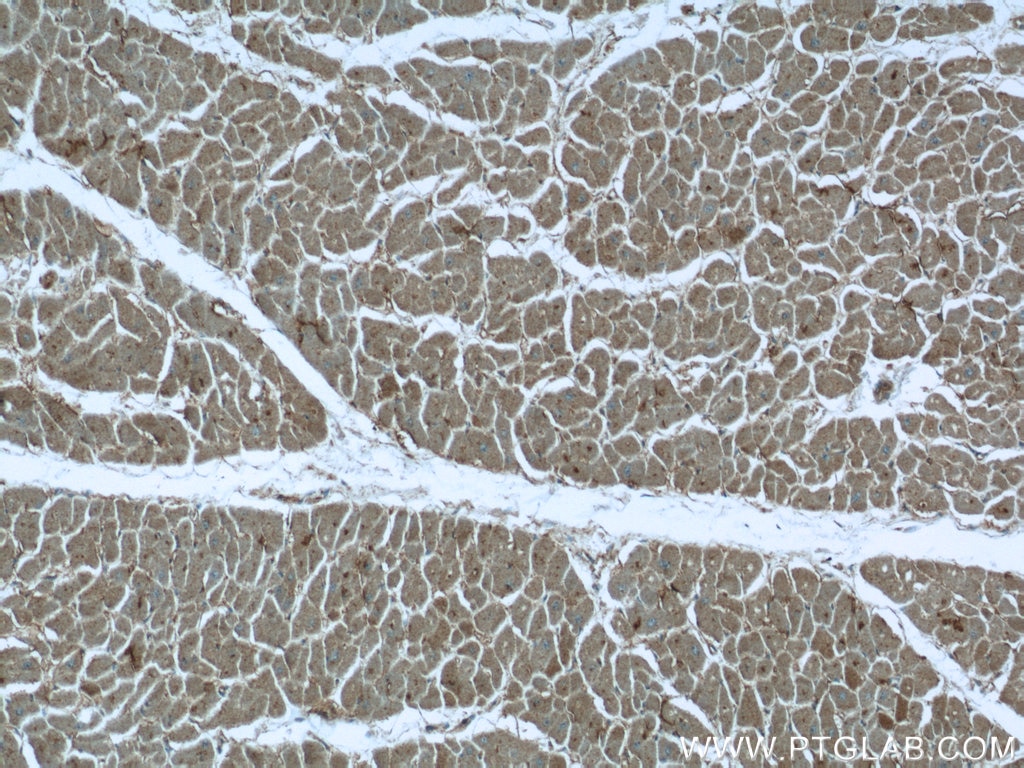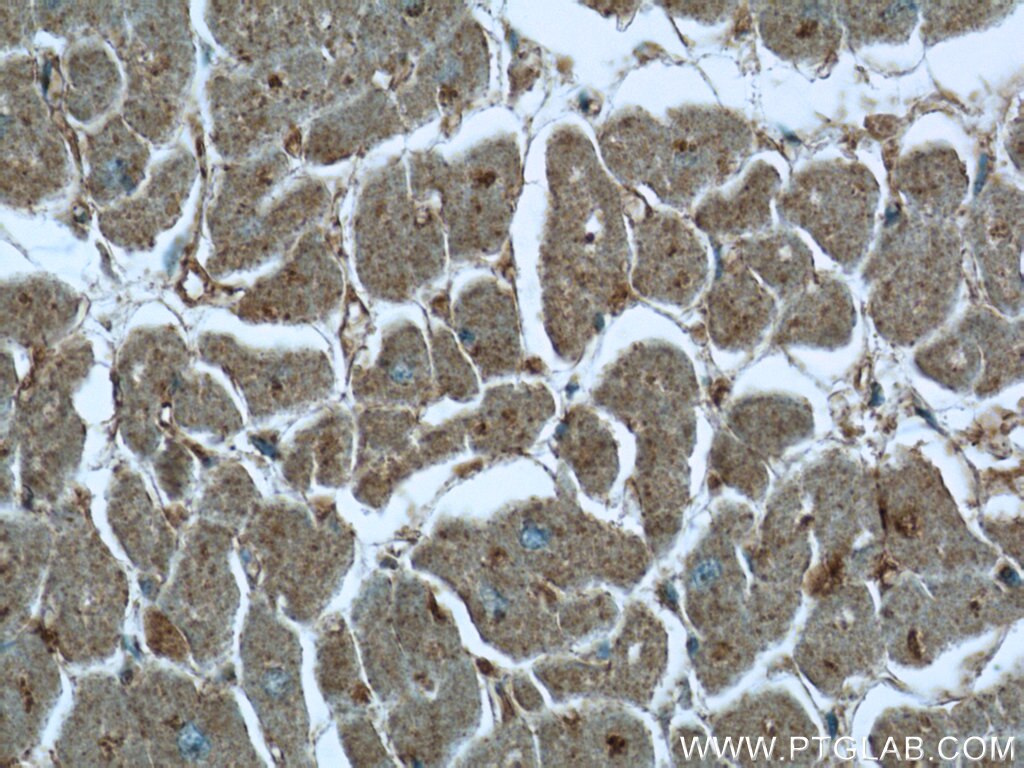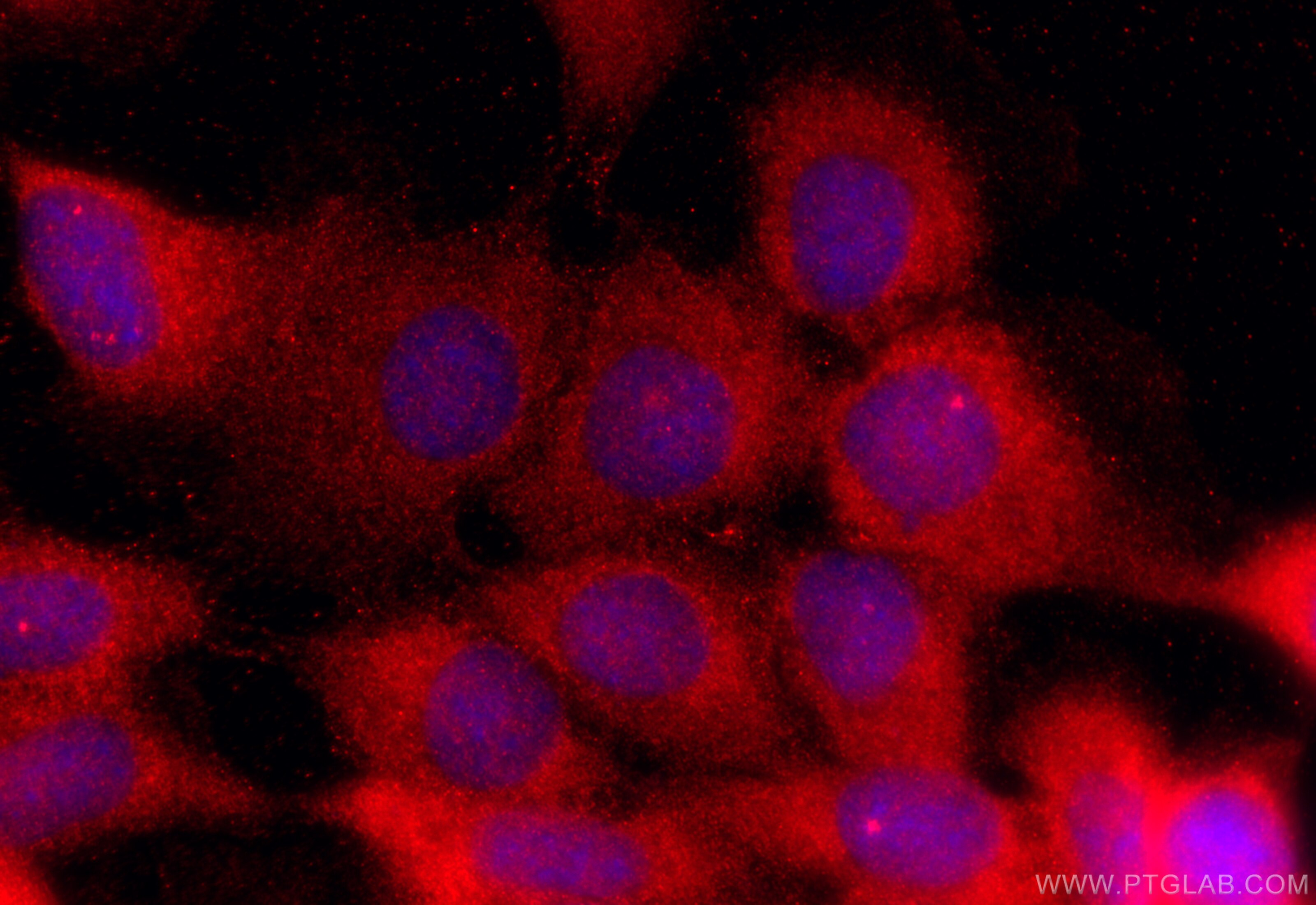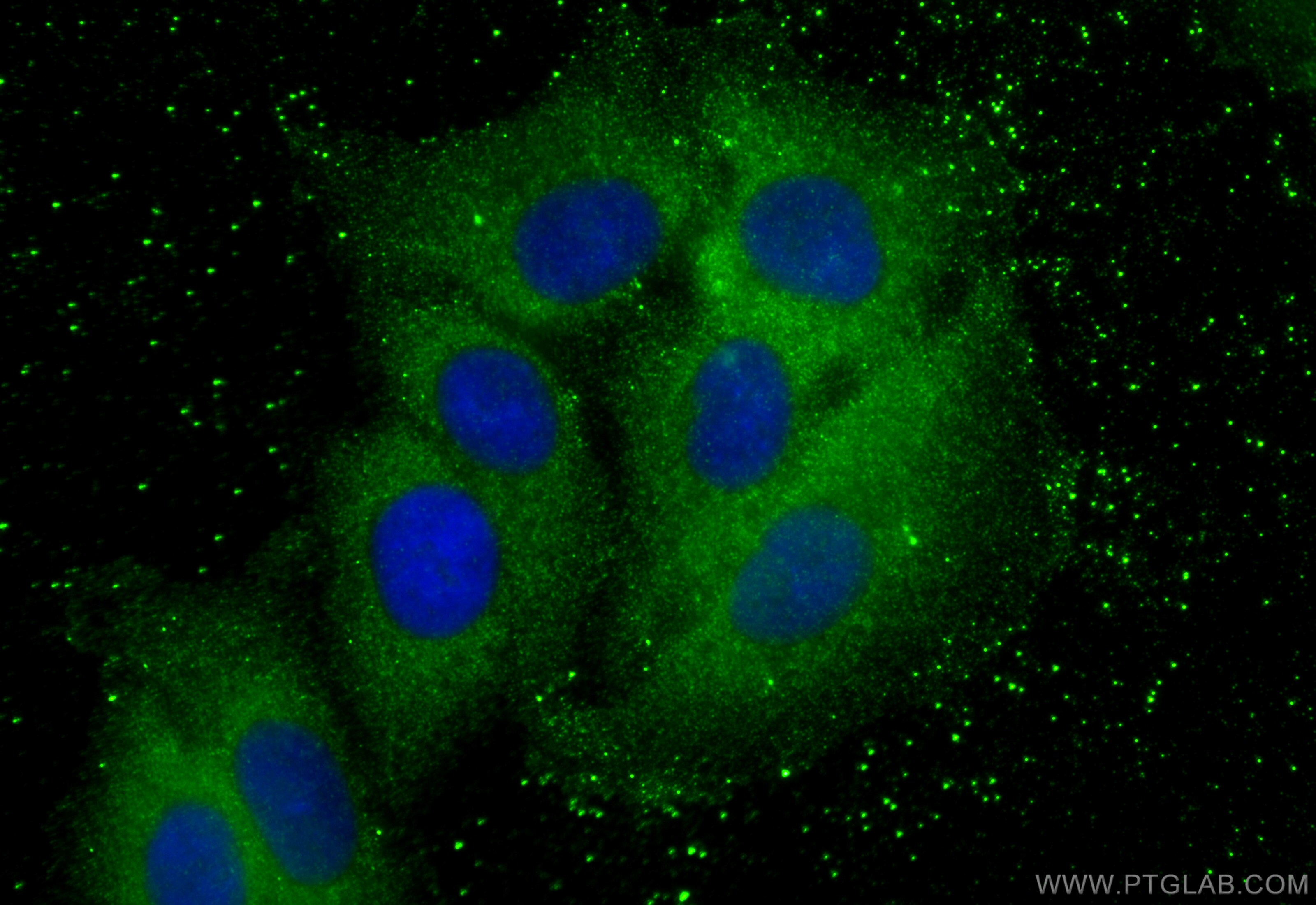Validation Data Gallery
Tested Applications
| Positive WB detected in | HCT 116 cells, rat liver tissue, HepG2 cells, K-562 cells |
| Positive IHC detected in | human colon tissue, human lung cancer tissue, human heart tissue Note: suggested antigen retrieval with TE buffer pH 9.0; (*) Alternatively, antigen retrieval may be performed with citrate buffer pH 6.0 |
| Positive IF/ICC detected in | A549 cells, A431 cells |
Recommended dilution
| Application | Dilution |
|---|---|
| Western Blot (WB) | WB : 1:500-1:2000 |
| Immunohistochemistry (IHC) | IHC : 1:50-1:500 |
| Immunofluorescence (IF)/ICC | IF/ICC : 1:50-1:500 |
| It is recommended that this reagent should be titrated in each testing system to obtain optimal results. | |
| Sample-dependent, Check data in validation data gallery. | |
Published Applications
| WB | See 4 publications below |
| IHC | See 1 publications below |
Product Information
15331-1-AP targets MVD in WB, IHC, IF/ICC, ELISA applications and shows reactivity with human, mouse, rat samples.
| Tested Reactivity | human, mouse, rat |
| Cited Reactivity | human, mouse |
| Host / Isotype | Rabbit / IgG |
| Class | Polyclonal |
| Type | Antibody |
| Immunogen |
CatNo: Ag7255 Product name: Recombinant human MVD protein Source: e coli.-derived, PGEX-4T Tag: GST Domain: 1-400 aa of BC000011 Sequence: MASEKPLAAVTCTAPVNIAVIKYWGKRDEELVLPINSSLSVTLHQDQLKTTTTAVISKDFTEDRIWLNGREEDVGQPRLQACLREIRCLARKRRNSRDGDPLPSSLSCKVHVASVNNFPTAAGLASSAAGYACLAYTLARVYGVESDLSEVARRGSGSACRSLYGGFVEWQMGEQADGKDSIARQVAPESHWPELRVLILVVSAEKKLTGSTVGMRASVETSPLLRFRAESVVPARMAEMARCIRERDFPSFAQLTMKDSNQFHATCLDTFPPISYLNAISWRIIHLVHRFNAHHGDTKVAYTFDAGPNAVIFTLDDTVAEFVAAVWHGFPPGSNGDTFLKGLQVRPAPLSAELQAALAMEPTPGGVKYIIVTQVGPGPQILDDPCAHLLGPDGLPKPAA 相同性解析による交差性が予測される生物種 |
| Full Name | mevalonate (diphospho) decarboxylase |
| Calculated molecular weight | 43 kDa |
| Observed molecular weight | 66-74 kDa, 45 kDa, 37 kDa |
| GenBank accession number | BC000011 |
| Gene Symbol | MVD |
| Gene ID (NCBI) | 4597 |
| RRID | AB_2147439 |
| Conjugate | Unconjugated |
| Form | |
| Form | Liquid |
| Purification Method | Antigen affinity purification |
| UNIPROT ID | P53602 |
| Storage Buffer | PBS with 0.02% sodium azide and 50% glycerol{{ptg:BufferTemp}}7.3 |
| Storage Conditions | Store at -20°C. Stable for one year after shipment. Aliquoting is unnecessary for -20oC storage. |
Background Information
The enzyme mevalonate pyrophosphate decarboxylase(MVD) catalyzes the conversion of mevalonate pyrophosphate into isopentenyl pyrophosphate. It is also named as MPD and as a unique enzyme in one of the early steps in cholesterol biosynthesis, MVD may be a useful target for drugs aimed at lowering serum cholesterol levels(PMID:8626466). The intracellular glycosylation does not contribute to the difference between the 45 and 37 kDa species of MVD. The native MVD has a molecular weight of 90 kDa that it consists of two identical subunits of 45 kDa and a 37 kDa protein is also found as a subunit of MVD and this type of MVD may be a 74 kDa.But the 37 kDa enzyme appeared only when the rats are fed the CP diet.(PMID:9348097).
Protocols
| Product Specific Protocols | |
|---|---|
| IF protocol for MVD antibody 15331-1-AP | Download protocol |
| IHC protocol for MVD antibody 15331-1-AP | Download protocol |
| WB protocol for MVD antibody 15331-1-AP | Download protocol |
| Standard Protocols | |
|---|---|
| Click here to view our Standard Protocols |
Publications
| Species | Application | Title |
|---|---|---|
Cancer Cell Targeting the mevalonate pathway suppresses ARID1A-inactivated cancers by promoting pyroptosis | ||
J Hepatocell Carcinoma miR-612 Enhances RSL3-Induced Ferroptosis of Hepatocellular Carcinoma Cells via Mevalonate Pathway | ||
Cell Signal Circ_0011058 facilitates proliferation, angiogenesis and radioresistance in papillary thyroid cancer cells by positively regulating YAP1 via acting as miR-335-5p sponge. | ||
Curr Issues Mol Biol Gigantol Improves Cholesterol Metabolism and Progesterone Biosynthesis in MA-10 Leydig Cells. | ||
Front Pharmacol CCR9 overexpression promotes T-ALL progression by enhancing cholesterol biosynthesis |

